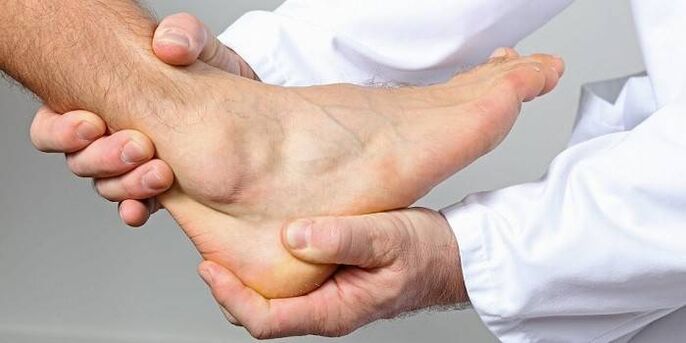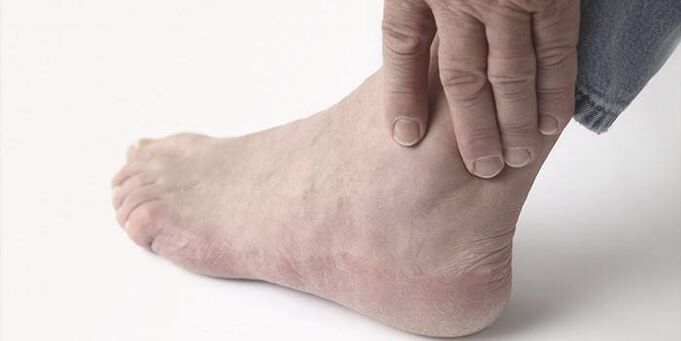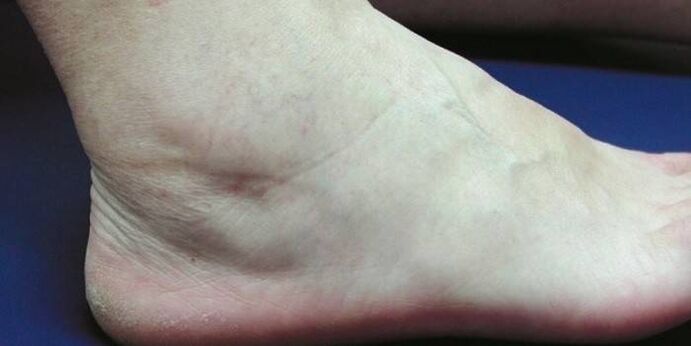The older the person becomes, the greater the risk of developing degenerative and destructive changes, especially in the work of the musculoskeletal system. Arthrosis of the ankle joint is a disease that affects the cartilage and tissue of the joint in varying degrees of severity and, if left untreated, can lead to disability. With the initial development of the pathology, the symptoms of the disease are poorly expressed and their presence can only be determined with the aid of X-rays.
what is ankle arthrosis
The disease, in which the articular cartilage and surrounding tissues are gradually destroyed, is called ankle arthrosis. The basis of the pathology is a degenerative dystrophic process and inflammation is secondary. Ankle arthrosis has a chronic undulating course, with alternating exacerbations and remissions. The disease progresses gradually. The female and male population suffer from arthrosis equally. With age, the probability of developing pathology increases dramatically.
Symptoms
Ankle joint diseases are periodically exacerbated. During remission of arthrosis, symptoms may not even appear. The pathology develops without surrendering. A person experiences moderate ankle pain with significant physical exertion, increased stiffness, and leg fatigue. As the pathology progresses, the pain becomes more pronounced, appears at rest and intensifies at night.
When the joint deformity becomes visible, the ankle's range of motion decreases and, when walking, there is a characteristic snapping and clicking sound. Sometimes there is a bend in the leg, the legs take on a valgus (X-shaped) or varus (O-shaped) shape. In ankle arthrosis, initial pains are characteristic, appearing at the beginning of movement after a state of rest and disappearing during walking.
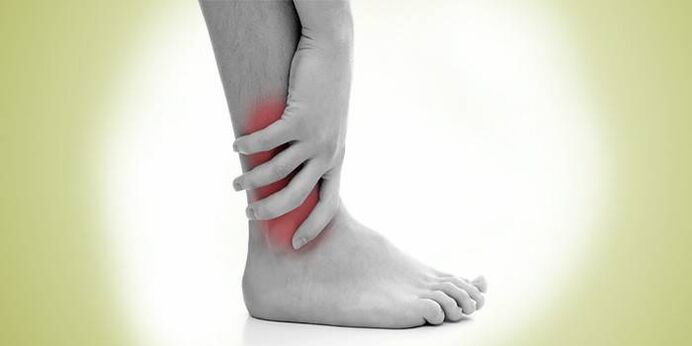
Occurrence causes
Ankle arthrosis is divided into two groups: primary and secondary. The first arises for unknown reasons. The second develops due to adverse factors: inflammation, trauma, etc. In both cases, the pathology is based on metabolic disturbances in the cartilage tissue. The main reasons for the development of secondary arthrosis:
- bone deformation (fractures) or damage to ligaments due to an ankle injury;
- stretching the joint capsule;
- clamping of the nerve endings of the lumbar spine;
- overweight;
- wear uncomfortable shoes;
- prolonged load on the joint (intense sports, constant standing);
- diseases associated with metabolic disorders (gout, diabetes mellitus, lack of estrogen in menopause and others);
- intervertebral hernias, osteochondrosis of the lumbar spine, and other conditions, accompanied by rupture of the leg, muscular apparatus, or nerve compression.

the degree of the disease
With ankle arthrosis, three grades are distinguished, which are specified by hardware diagnostics:
- Grade I - pathological changes are not noticeable, there is a narrowing of the ankle joint slack, compaction of the talus;
- Grade II - swelling becomes a consequence of disease progression, painful sensations arise in the weather, leg mobility decreases, joint deformation is noted;
- Grade III - there is loss of joint amortization properties, ossification of the cartilaginous tissue, foot deformation leads to disability.

possible consequences
A patient with ankle arthrosis can be considered a disability, as the complete destruction of the joint leads to a limitation of motor activity. For this, the patient needs to undergo a medical examination. Categories of patients that can be attributed to a disability:
- patients with progressive arthrosis who have been ill for more than 3 years with disease exacerbations at least 3 times/year;
- patients operated on the joint and with life limitation;
- patients with severe impairment of static-dynamic function.
Diagnosis
The diagnosis of "second degree arthrosis of the ankle joint" (or any other step) is based on research, visual examination, and laboratory results. X-rays play a decisive role. In more advanced stages, deforming osteoarthritis and cystic formations in the bone area are detected. In difficult cases, the patient is referred for a CT scan of the ankle for a more accurate assessment of the bone structures. An MRI of the ankle can be performed to examine the soft tissue.

Ankle Arthrosis Treatment
The therapy of the affected joint in post-traumatic arthrosis is carried out according to the general scheme. Comprehensive treatment includes:
- removal of pain symptoms;
- elimination of the inflammatory process;
- restoration of joint mobility;
- improvement of trophic processes;
- restoration of normal blood circulation in the limb:
- replacement of a joint with artificial prostheses (if necessary).
Medication
Drug therapy is selected taking into account the signs and stage of the disease. During periods of exacerbation, nonsteroidal anti-inflammatory drugs are used in the form of pills or injections. Along with them, it is recommended to take local anesthetic medications in the form of gels or ointments. With pronounced pain sensations, corticosteroid drugs are prescribed for intra-articular blocks. Its introduction is carried out a maximum of 4 times/year. To normalize the metabolism in the cartilaginous tissue, drugs from the chondroprotective group are prescribed.
ointments
Topical medications cannot cure ankle arthrosis or crusarthrosis, but they help speed recovery and prevent the disease from recurring. Among the effective drugs are:
Physiotherapy
The following physical therapy methods will help to suspend ankle arthrosis:
Diet
For inflammatory diseases of the knee joints, bone tissue and ankle joint ligaments, a special diet is indicated. It is necessary to include jellies, gelatinous meats and edible gelatin in the diet, as these products are natural chondroprotectors that restore cartilage tissue. Complex carbohydrates (vegetables, fruits, whole grain bread), milk proteins (cottage cheese, cheese), vitamins and mineral complexes should be on the menu. For better assimilation of food, food should be steamed or boiled.
Physical exercises
After studying the radiograph, the doctor may prescribe therapeutic exercises. Special ankle exercises help relieve pain, relieve muscle tension, and restore blood circulation. Examples of exercise therapy exercises:
- sitting in a chair, socks and heels alternately come off the floor;
- the toes rest on the floor, the heel rises and makes circular movements;
- the legs are together, the foot extends to the side of the body.
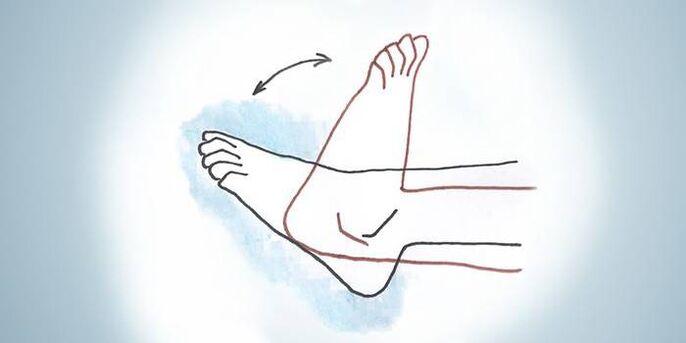
Massage
The procedure for ankle arthrosis is characterized by a variety of techniques at various stages. The purpose of massage is to improve lymphatic and blood circulation in the foot muscles of the joint cavity, to eliminate the difficulty in ankle mobility. To relax the muscles, first massage the ankle using kneading and stroking techniques. Then the toes are massaged and the foot and heel are massaged. Finish the procedure by working deep into the ankle joints.
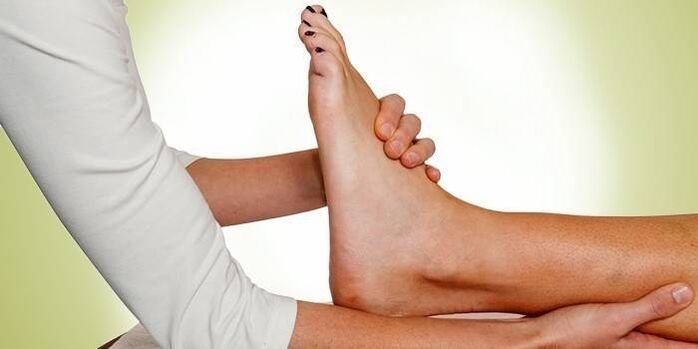
Surgery
If conservative therapy for arthrosis does not bring positive results, the attending physician prescribes surgical treatment. Among the operating methods are considered the best:
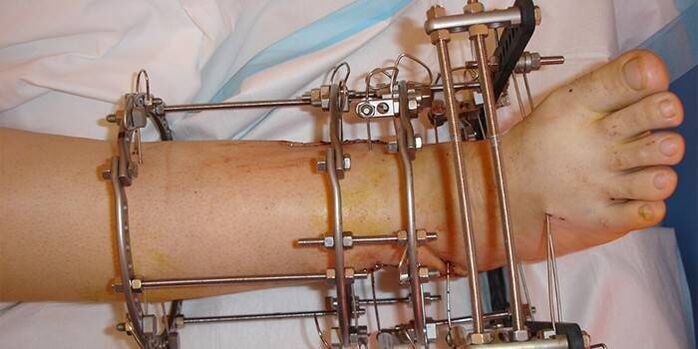
traditional methods
Village recipes help complex ankle joint therapy for osteoarthritis:
Ankle arthrosis prevention
To reduce the risk of developing ankle arthrosis, it is necessary to adhere to preventive measures, which include:
- control of body weight;
- proper nutrition;
- wear comfortable shoes without high heels;
- preventing joint injuries;
- timely treatment of endocrine and vascular diseases;
- regular performance of gymnastics for the ankle.

Ankle arthrosis photo
